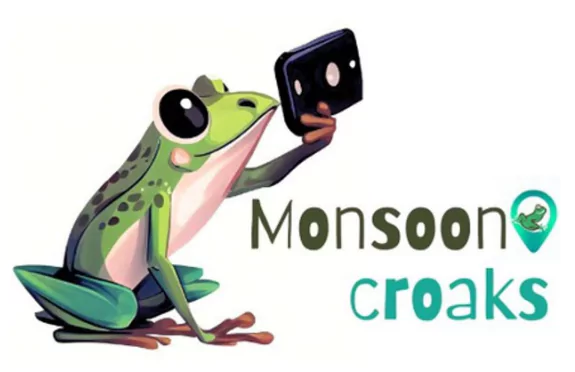Monsoon Croaks Bioblitz 2024, a citizen science programme aimed at documenting the frogs of Kerala during the monsoon is being organised.
Monsoon Croaks Bioblitz 2024
- Organised by: The Monsoon Croaks Bioblitz 2024 is being organised by The Centre for Citizen Science and Biodiversity Informatics under the Kerala Forest Research Institute (KFRI).
- A bioblitz: It is an intensive survey conducted over a period of time to identify as many species as possible within a designated area.
- Kerala host over 200 frog species.
Enroll now for UPSC Online Course
About Monsoon Croaks Project

Monsoon Croaks Project is a community-driven four month long science project which will start from June 1 till September 30 dedicated to documenting and studying amphibian diversity and distribution across Kerala.
- Aim: To address the knowledge gap regarding the identification of key habitats of frogs by documenting the frogs of Kerala during the monsoon to ultimately protect them.
- People Participation: People of all ages can participate in this project by uploading photographs of frogs and their sounds on the iNaturalist app.
- A volunteer frog mapper: He/She will learn to identify various frog species, document their calls, observe their behaviour, and record essential ecological data.
- Collaboration: All the scientific observations made available during the bioblitz will become part of the Global Biodiversity Information Facility (GBIF), a biodiversity open source database.
- This information can be used for biodiversity awareness, habitat conservation, climate change research and policy making.
- It will also aid in building comprehensive databases that support ongoing research and conservation efforts.
- Significance:
- Documenting a database: Frogs have a diverse habitat and are found in forests, on farms, in gardens and in our backyards. A citizen led initiative will result in better documentation and identification of the various members of the species.
- Engage citizens: Such an initiative will promote people participation in conservation activities and at the same time make them aware about the importance of our natural systems.
Global Biodiversity Information Facility (GBIF)
It is an international network and data infrastructure funded by the world’s governments
- Purpose: It is to provide anyone, anywhere, open access to data about all types of life on Earth.
- Secretariat: It is situated in Copenhagen
- The GBIF network: It provides data-holding institutions around the world with common standards, best practices and open-source tools enabling them to share information about the place and time of recording the species
- Source of knowledge: The knowledge of the species is derived from diverse sources, like museum specimens collected in the 18th and 19th century to DNA barcodes and smartphone photos recorded in recent days and weeks.
|
-
- Boost survival: Frogs serves as an indicator of the ecosystem’s health, but the survival of this species is challenged by many factors such as climate change, untimely rainfall patterns, habitat loss and water pollution. Better identification can lead to better survival chances.
- 41% of the world’s frogs are on the IUCN Red List of endangered species.
![]() 1 Jun 2024
1 Jun 2024

